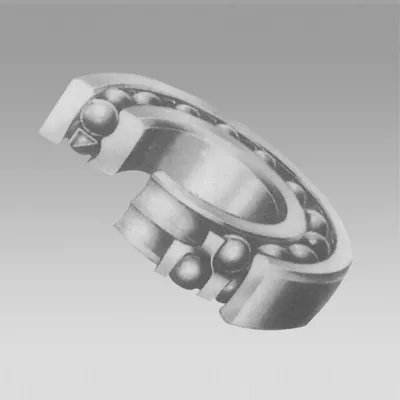
Dec . 04, 2024 18:15 Back to list
638 bearing dimensions
Understanding 638 Bearing Dimensions and Their Applications
In the world of mechanical engineering and design, bearings play a critical role in facilitating smooth rotational or linear movement. Among the numerous types available, 638 bearings (often referred to as 638 deep groove ball bearings) are widely utilized due to their versatility and efficiency. This article explores the dimensions of 638 bearings, their applications, and factors to consider when selecting the right bearing for specific needs.
Dimensions of 638 Bearings
The 638 bearing dimension refers to a specific size defined by its inner diameter, outer diameter, and width. Typically, for a 638 bearing, the dimensions are as follows
- Inner Diameter 8 mm - Outer Diameter 28 mm - Width 9 mm
These dimensions make the 638 bearing suitable for various applications, enabling it to handle moderate radial loads and axial loads in both directions. The deep groove design allows for a large number of balls within the races, providing improved load distribution and reduced friction.
Load Capacity and Performance
One of the significant advantages of the 638 bearing is its capability to accommodate both radial and axial loads, which is important in many mechanical systems. The standard load rating for this bearing type usually falls within a range that allows it to perform well under various operating conditions. In terms of maximum speed, the 638 bearing can typically operate efficiently at up to 25,000 RPM, making it suitable for high-speed applications.
Material and Construction
Most 638 bearings are constructed from high-quality materials such as carbon steel or stainless steel. The choice of material directly influences the bearing's durability, resistance to wear, and overall performance. Additionally, some bearings come with sealed or shielded options to protect against contamination and retain lubrication, which enhances their lifespan and reliability.
Applications of 638 Bearings
The versatility of 638 bearings makes them suitable for various applications across different industries. Common applications include
1. Electric Motors Due to their compact size and ability to accommodate high speeds, 638 bearings are commonly found in electric motors for both domestic and industrial uses.
638 bearing dimensions

3. Automotive Industry In vehicles, 638 bearings are utilized in different components, including wheel hubs and transmission systems, ensuring smooth movement and functionality.
4. Household Appliances From washing machines to fans, these bearings play a vital role in ensuring the smooth operation of various household appliances.
5. Robotics and Machinery In robotic applications and manufacturing machinery, 638 bearings contribute to precision and performance, allowing for accurate movements and reduced downtime.
Selecting the Right 638 Bearing
When selecting a 638 bearing, engineers and designers must consider several factors
- Load Requirements Understanding the specific load conditions that the bearing will encounter is essential for ensuring longevity and performance.
- Speed Ratings Matching bearing speed ratings with the application ensures that the bearing operates within its safe limits, preventing premature failure.
- Environmental Factors Consideration of the operating environment, including temperature and the presence of contaminants, can guide decisions regarding sealed or shielded bearings.
- Lubrication Proper lubrication is vital for minimizing friction and wear. Depending on the application, selecting the appropriate lubrication method—whether grease or oil—can greatly impact bearing performance.
Conclusion
The 638 bearing stands out in the landscape of engineering components, revered for its dimensional versatility and ability to handle various loads. Understanding the dimensions and characteristics of 638 bearings enables engineers and designers to make informed decisions for their specific applications, ultimately leading to more efficient and reliable mechanical systems.
Latest news
-
Durable Greenhouse Pillow Block Bearings for Reliable Ventilation
NewsAug.31,2025
-
Spherical Roller Bearings Applications: Heavy Duty, Self-Aligning
NewsAug.30,2025
-
Premium Deep Groove Ball Bearings | High Speed & Reliability
NewsAug.29,2025
-
Durable Scaffolding Clamps - Secure & Reliable Tube Connectors
NewsAug.28,2025
-
Common Failures in Thrust Ball Bearings and Solutions
NewsAug.22,2025
-
How Tapered Roller Bearings Can Take Shock Loads
NewsAug.22,2025
